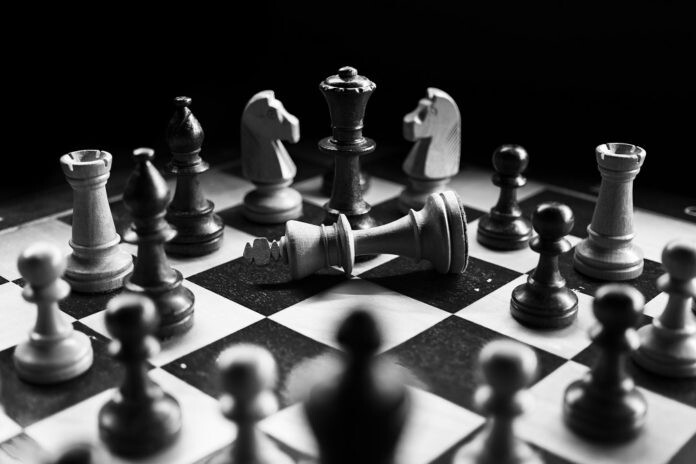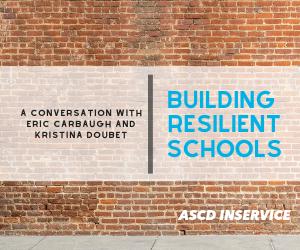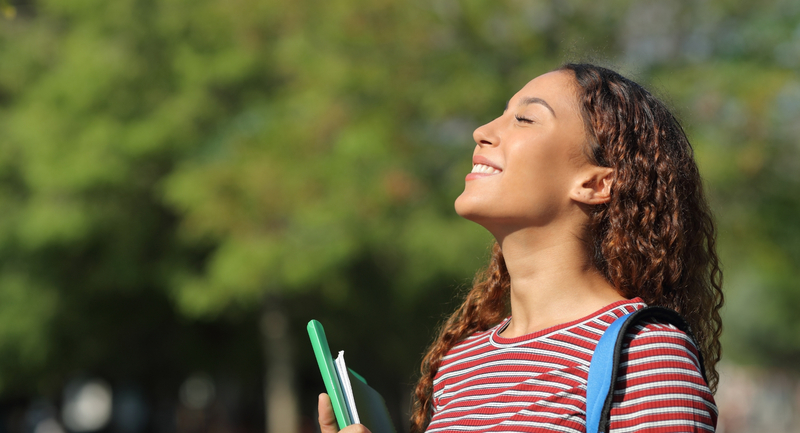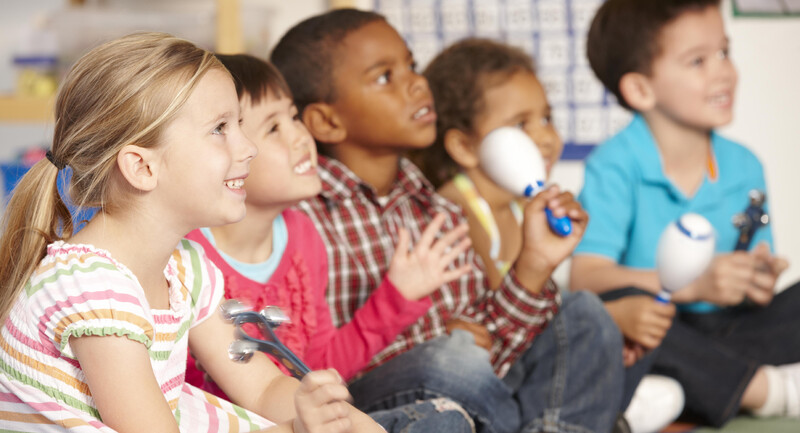Chess is having a moment. A year of quarantine was already fueling people’s search for hobbies, new and old, while stuck at home. Then, Netflix premiered The Queen’s Gambit in October, a show that follows a young orphan and chess whiz Beth Harmon and her rise to win a world champion title in a space dominated by men. More than 62 million viewers watched the series in its debut month. Chess sets sold out after years of flat and declining sales. Almost 13 million players joined chess.com in 2020. A game often stereotyped as a skillful venture reserved for the highly intellectual has the world’s renewed attention as an accessible (and fun) pastime.
Ask Salome Thomas-EL, a principal and chess coach at Thomas Edison Charter School in Delaware, what he thinks of the game’s popularity surge, and he’ll say he’s been waiting for everyone else to catch up. Thomas-EL began using chess as a teaching tool in the 1980s at Vaux Middle School in Philadelphia and has been touting the game’s benefits for elementary and middle school students for decades. He puts a focus on empowering his Black and Latinx all-girls teams; his students have won nearly a dozen national chess championships over the years.
Beyond the wins, “Principal El,” as students call him, sees the game as the best way to teach critical thinking, problem solving, perseverance, and self-esteem, along with academic skills like math and history. Because chess develops the brain and the brain develops at a young age, Thomas-EL stresses its necessity for all students. “If we really want to impact kids,” he says, “we need to make sure that every 5-year-old in the country is learning to play chess.“
He spoke with ASCD about how more schools can incorporate chess into the classroom.
Why did you choose to bring chess into teaching and leading?
My brother taught me to play chess when I was young, just enough moves so that he could continue to beat me. It wasn’t until I started teaching that I learned how much chess develops the mind. I used chess to teach mathematics in special education classrooms, showing kids that bishops move on diagonals, knights move on right angles. The students learned more than mathematics. They were walking around the school with intellectual capital. I learned early on that smart is not something you are; it is something that you can be become. It’s a journey.
I also learned there had been a chess program [at the school] a decade before my arrival. This was when Michael Jordan was becoming big, and [coworkers] said, “You won’t be able to recruit any players because everybody wants to be Michael Jordan.” I told students, “If you sign up, I’ll make you just as famous as Michael Jordan.” Chess became more popular in our community than any sport. And now we know that LeBron James and Michael Jordan play chess to help them with their vision.
How have you worked the game into the school day?
When I became an elementary principal, playing chess was [basically] mandatory—it was after school, it was at breakfast, it was at lunch. We used an in-school program by the American Foundation for Chess for 2nd and 3rd graders called First Move. The program was all videos, so the teachers could learn it right along with the students.
You develop your own lessons around whatever the class lesson is. Every piece is worth points, so maybe you talk about multiplying by five with that lesson. Maybe you talk about what the rook represented in ancient history. We offered middle school students chess algebra as an elective. When you play chess, you record all your moves in algebraic notation. So, imagine a kindergarten student who is writing chess moves in algebraic notation—that kid will surely grow up and become president or find a cure for a disease because they are being taught to think.
“Building resilient students is not about teaching them how to become successful. It’s about teaching them how to respond when they’re not successful.”
Our students played with senior citizens at nursing homes … against local police officers, the fire department, the water department, and [people] were amazed at how good these kids were at a game they struggled to learn. I also organized a cultural exchange with a principal in Vermont. He wanted his students to learn chess and I wanted my students to learn about Vermont, which was the first to abolish slavery in the state constitution. The students played chess, but they also visited homes where Frederick Douglass lived and where Harriet Tubman was allowed to hide on the way to Canada. Our students learned so much about their own history—and the original connection was through chess.
What skills and lessons do students learn?
What I often say is that smart students don’t always play chess, but students who play chess always become smart. Chess teaches patience, critical thinking, problem solving, and reasoning. It teaches students to not only see the turn but to see around the turn, because in chess you have to think five moves ahead. In The Queen’s Gambit, [the main character Beth] moved pieces on the ceiling and already saw in her mind how those games would end. Students I had 30 years ago reach out to me and say they still remember those matches and are still using those skills in life, in business, in the corporate world, in law school.
Building resilient students is not about teaching them how to become successful. It’s about teaching them how to respond when they’re not successful. When I started teaching elementary and middle school students to play chess, they were beating everybody. They didn’t even want to practice anymore. So, I said, “No more elementary and middle school. We only compete against high school.” They lost match after match. Then, they beat Central High School’s chess team, which is one of the top high schools academically in the nation.
Failure is motivating. Success can be paralyzing. We have to be okay with sort of getting out of that comfort zone and moving into the learning zone, which is close to the frustration zone.
You’ve called chess ‘the great equalizer.’ What do you mean by that?
Being an equity-focused teacher or leader is about finding out the needs of our students and teachers and giving them what they need to be successful. Chess became that tool for me. For many children who live in poverty or in struggling communities, their parents won’t be able to afford to send them to Johns Hopkins for science camp or to Notre Dame for exchange programs. I work in communities where most students [live at or below the poverty line.] For these students to have access to a program that will challenge their mind at a high level is rare.
It was mostly boys in chess in the beginning, but once kids formed a team, the girls started becoming good players a lot earlier. Susan Polgar, one of the first women grandmasters in the world, was running all-girls chess tournaments because she saw, even at her level, the need for attracting girls to the game. My idea was just to give them an environment where they could be comfortable exhibiting their greatness, because that’s not always easy and not always available.
You can sit across from someone who may come from a family with access, power, privilege, and destroy them in this game. In The Queen’s Gambit, [Beth] would go to all-male tournaments and the men would say, “Why are you even here?” But she knew that this was a chance to show that she belongs at their level. Chess eliminated the preconceived notions, all the biases, the judgment.
What advice do you have for educators who want to encourage their students’ interest in chess or incorporate it into their teaching?
The problem with chess right now is that it requires you to sit at a board. I’m sure the CDC is not going to approve of kids sitting that close together, even with a mask on. The best thing for students to do is learn through books and online platforms. I sent home chess sets to my students. It’s great because they can teach themselves. So, this is an ideal time. Chess.com has so many tools for students and the First Move program is affordable.
Every student I meet must start with Bobby Fischer Teaches Chess by Bobby Fischer and Stuart Margulies and Pandolfini’s Endgame Course by Bruce Pandolfini, who was a consultant on The Queen’s Gambit. I also recommend Chess for Success by Maurice Ashley and Chess Tactics for Champions by Susan Polgar.
[Not everybody will] become a competitive chess player, but we give them the opportunity to develop that perseverance, that stamina, that self-esteem, that self-efficacy. How do you think you became a better friend, a better student, a better person, a better community member through playing chess?
This interview has been edited for length and clarity.








